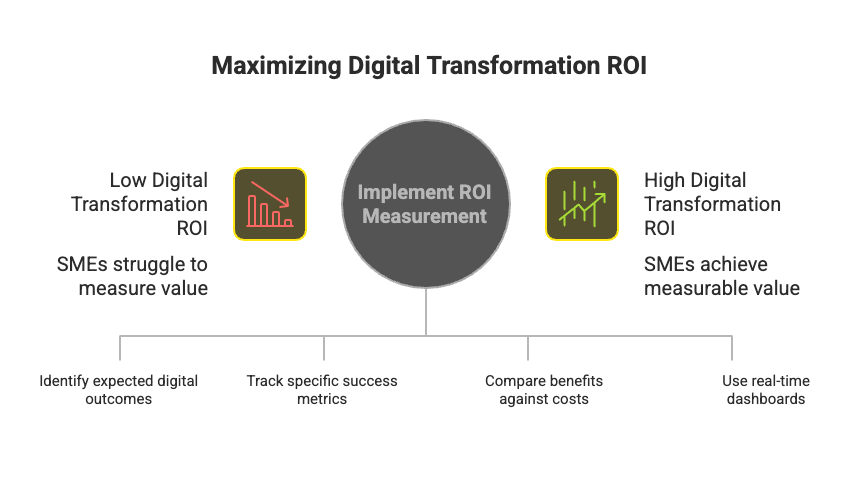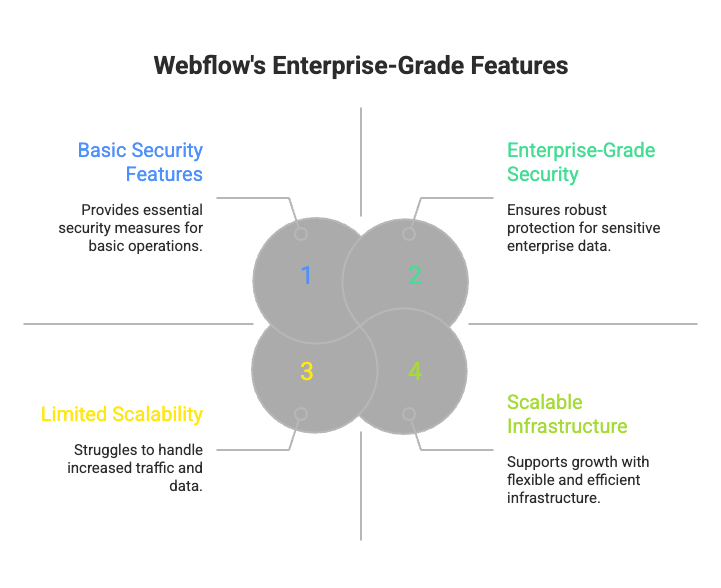In today’s fast-paced, tech-driven market, customer retention has become more critical than ever. While acquiring new customers remains a priority, retaining existing ones is often more profitable and sustainable. According to research, the cost of acquiring a new customer is five times higher than retaining an existing one, and increasing customer retention rates by just 5% can boost profits by 25% to 95%.
For businesses in Hong Kong, a global hub for commerce and innovation, digital transformation has emerged as a powerful tool to improve customer retention. By leveraging advanced digital tools and strategies, businesses can create personalized, seamless, and engaging customer experiences that build loyalty and satisfaction.
At RMD HK, we’ve seen how businesses across Hong Kong and the Asia-Pacific region (APAC) are using digital transformation to redefine customer relationships. This blog explores the impact of digital transformation on customer retention, offering actionable insights, real-world examples, and tips for businesses looking to stay ahead in a competitive market.
Why Customer Retention Matters in Hong Kong’s Business Landscape
1. High Competition Across Industries
Hong Kong’s dynamic business environment is home to thousands of enterprises, from local startups to global giants. In such a competitive landscape, retaining customers is key to maintaining market share and achieving sustainable growth.
2. Tech-Savvy Consumers
Hong Kong’s population is one of the most tech-savvy in the world, with high smartphone penetration and widespread use of digital services. Consumers expect businesses to deliver seamless, tech-driven experiences that cater to their needs.
3. Rising Customer Expectations
Today’s customers demand more than just products or services—they expect personalized interactions, on-demand support, and consistent engagement across multiple channels. Businesses that fail to meet these expectations risk losing customers to competitors.
4. The Value of Loyalty in Long-Term Growth
Retained customers are not only more likely to make repeat purchases but also act as brand advocates, sharing positive experiences with others. In Hong Kong, where word-of-mouth remains a powerful marketing tool, customer loyalty can drive exponential growth.
The Role of Digital Transformation in Customer Retention
Digital transformation reshapes how businesses interact with customers, offering tools and strategies to build stronger, longer-lasting relationships. Let’s explore the key ways it impacts customer retention.
1. Personalized Customer Experiences
Personalization is no longer optional—it’s a necessity. Digital tools like AI-driven analytics and CRM platforms enable businesses to tailor their offerings to individual customer preferences, creating highly personalized experiences.
How It Works:
- Customer Data Collection: Through websites, mobile apps, and social media, businesses can gather data on customer behavior, preferences, and purchase history.
- AI and Machine Learning: These technologies analyze data to predict customer needs and deliver personalized recommendations.
- Omnichannel Engagement: Personalized experiences are consistent across channels, from email campaigns to in-app notifications.
Example:
A Hong Kong-based fashion retailer used AI-powered personalization tools to recommend products based on browsing history and previous purchases. This resulted in a 30% increase in repeat purchases and improved customer satisfaction scores.
2. Improved Customer Support with Digital Tools
Providing exceptional customer support is a cornerstone of customer retention, and digital transformation has revolutionized how businesses deliver it.
Key Innovations:
- Chatbots and AI Assistants: These tools provide instant, 24/7 support for common queries, reducing wait times and improving customer satisfaction.
- Self-Service Options: Digital platforms allow customers to resolve issues independently, such as tracking orders or accessing FAQs.
- Omnichannel Support: Customers can seamlessly switch between channels (e.g., email, live chat, phone) without repeating their issues.
Example:
A Hong Kong financial services firm implemented a chatbot to handle customer inquiries about loan applications. The chatbot resolved 80% of queries without human intervention, leading to faster response times and higher customer retention.
3. Building Loyalty Through Rewards and Gamification
Gamification and digital loyalty programmes are effective ways to engage customers and encourage repeat business. Digital transformation enables businesses to create dynamic, engaging rewards systems that drive loyalty.
Features of a Digital Loyalty Programme:
- Points-Based Systems: Customers earn points for purchases or actions, redeemable for discounts or rewards.
- Gamification Elements: Leaderboards, badges, and challenges make earning rewards fun and engaging.
- Real-Time Updates: Customers can track their progress and rewards in real time through mobile apps.
Example:
A Hong Kong coffee chain launched a mobile loyalty app with gamified challenges (e.g., “buy 5 drinks to unlock a free one”). The initiative increased app downloads by 40% and boosted repeat visits by 25%.
4. Predictive Analytics for Proactive Retention
Predictive analytics uses data to identify customers at risk of leaving and takes proactive steps to retain them.
How It Works:
- Data Analysis: Identify patterns in customer behavior that indicate dissatisfaction or churn risk.
- Automated Interventions: Trigger personalized offers, discounts, or support outreach to re-engage at-risk customers.
Example:
A subscription-based fitness app in Hong Kong used predictive analytics to identify users who hadn’t logged in for two weeks. Automated email campaigns offering discounted renewal rates brought back 15% of inactive users.
5. Enhancing User Experience (UX) Across Digital Platforms
A seamless, intuitive user experience is critical for retaining customers. Digital transformation allows businesses to optimize UX on websites, apps, and other platforms.
Key UX Enhancements:
- Responsive Design: Ensure websites and apps work flawlessly across devices.
- Fast Load Times: Speed is essential—slow platforms drive customers away.
- Intuitive Navigation: Make it easy for customers to find what they need.
Example:
A Hong Kong travel agency revamped its website with faster load times and a streamlined booking process, reducing bounce rates by 35% and increasing retention.
Real-World Case Study: Digital Transformation in Retail
Client: A mid-sized retail chain in Hong Kong.
Challenge: High customer churn due to inconsistent online and offline experiences.
Solution:
- Implemented a CRM system to unify customer data from in-store and online channels.
- Launched a mobile app with personalized product recommendations and a loyalty rewards programme.
- Integrated predictive analytics to identify at-risk customers and target them with personalized offers.
Outcome: - 25% increase in customer retention within a year.
- 40% growth in app downloads and engagement.
- Improved brand loyalty and customer satisfaction scores.
Actionable Steps to Improve Customer Retention Through Digital Transformation
1. Invest in Customer Data Analytics
Start by collecting and analyzing customer data to understand their preferences, behaviors, and pain points.
2. Adopt Omnichannel Strategies
Ensure consistent and seamless customer experiences across all touchpoints, from social media to physical stores.
3. Leverage Personalization Tools
Use AI and machine learning to deliver tailored recommendations and experiences.
4. Prioritize UX Design
Focus on creating fast, intuitive, and visually appealing digital platforms.
5. Offer Proactive Support
Use chatbots, self-service tools, and predictive analytics to address customer needs before they become issues.
6. Implement Loyalty Programmes
Drive repeat business with engaging digital rewards systems.
FAQs: Digital Transformation and Customer Retention
How does digital transformation improve customer retention?
Digital transformation enhances customer experiences through personalization, improved support, predictive analytics, and gamified loyalty programmes, making it easier to retain customers.
What industries benefit most from digital transformation for retention?
Industries like retail, finance, hospitality, and e-commerce see significant benefits due to their reliance on customer engagement and loyalty.
How can small businesses in Hong Kong afford digital transformation?
Government initiatives like Cyberport and Hong Kong Science Park funding schemes provide financial support for startups and SMEs, making digital transformation more accessible.
Why Choose RMD HK for Your Digital Transformation Journey
At RMD HK, we specialize in helping businesses across Hong Kong and APAC leverage digital transformation to improve customer retention, loyalty, and satisfaction.
What We Offer:
- Low-Code/High-Code Solutions: Build scalable, future-proof digital platforms.
- Customer Analytics: Unlock insights to personalize experiences and boost retention.
- Omnichannel Strategies: Ensure seamless customer interactions across all channels.
- UX Design Expertise: Create intuitive, user-friendly platforms that keep customers engaged.
Final Thoughts
In Hong Kong’s competitive market, retaining customers is just as important—if not more so—than acquiring new ones. By leveraging digital transformation, businesses can build stronger relationships, deliver exceptional experiences, and drive long-term loyalty.




